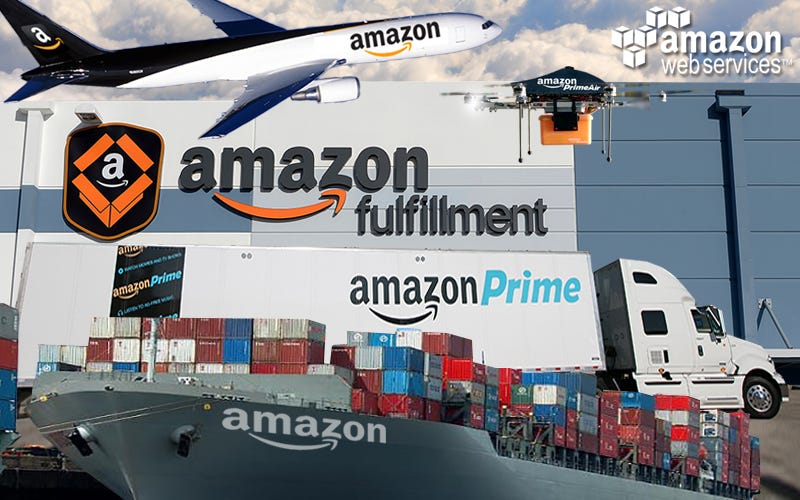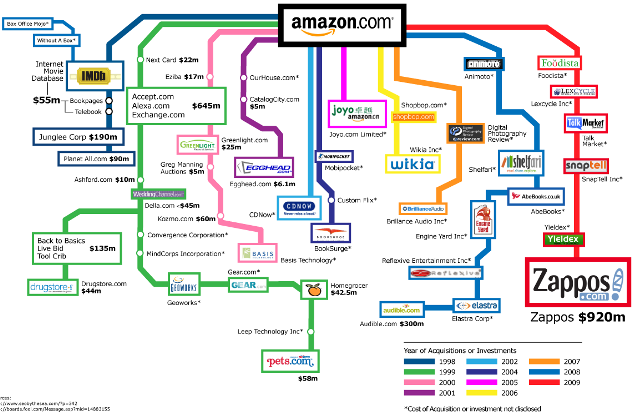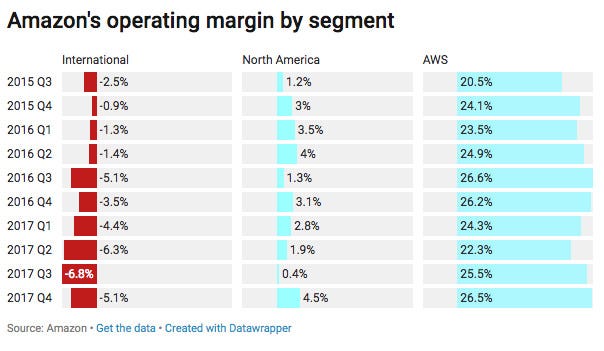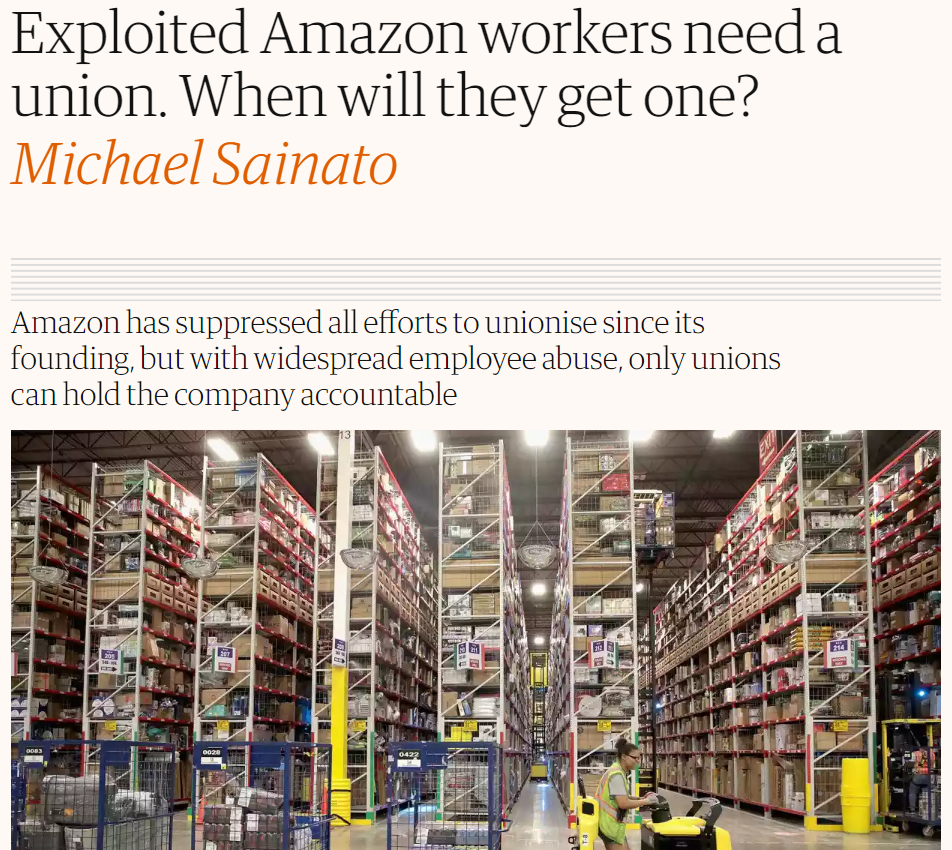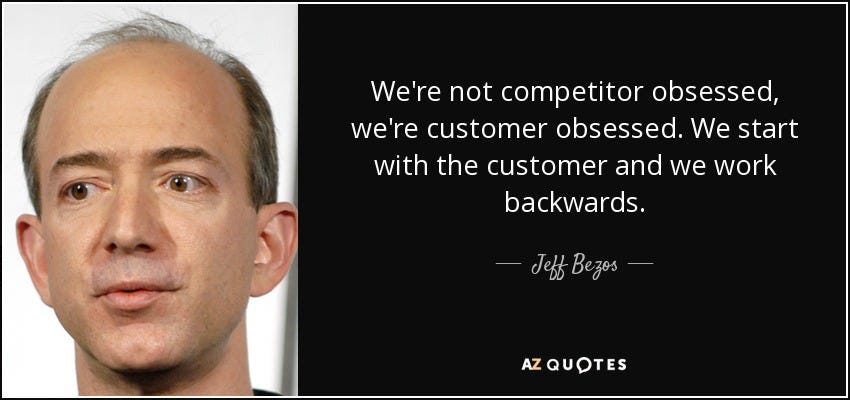Latest news about Bitcoin and all cryptocurrencies. Your daily crypto news habit.
Just to give you a good context, Amazon’s valuation is greater than about 100 S&P 500 companies combined. Amazon’s valuation is almost equal to that of the big 4 banks — JP Morgan, Citigroup, Bank of America and Wells Fargo. If Amazon was a person, and the person spent 100$ every day, they could live comfortably for the next 27 million years (unless we move to Mars, because then you have to start paying taxes to our neighbors). There is this cleverly made animation that shows you a good estimate of what 1 trillion really means (It was originally done for Apple, but Amazon joined the club now).
So, how did a company that started out as an online book store reach this monstrous state with no stopping it?
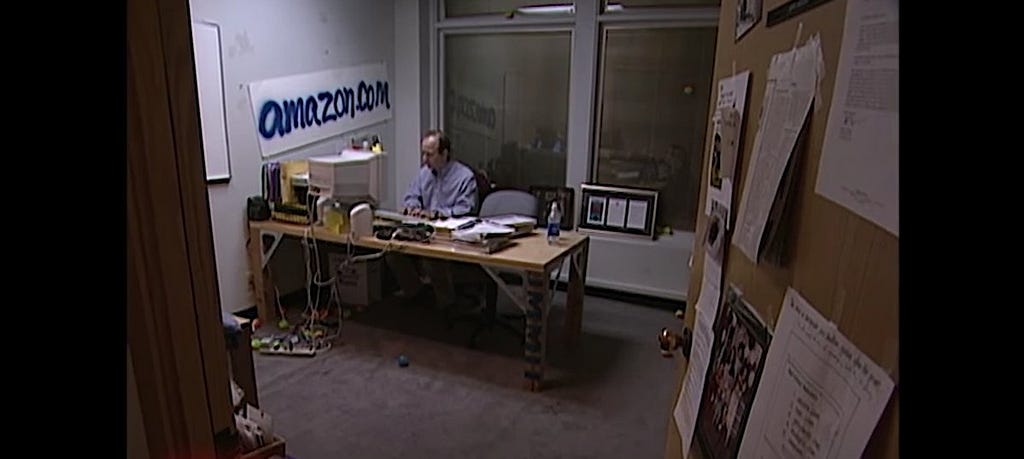 The initial office of Amazon, in the 1990s
The initial office of Amazon, in the 1990s
When we think about Amazon, some of us think they are an e-commerce giant, some of us think they will revolutionize smart devices and others simply think they are distracted and want to become a monopoly. All true — but Amazon’s strategy is not so obvious. Digging a little deeper, you would see that here are three ways they stand out, and are justifiably valued at $1,000,000,000.
1. Scalability:
Amazon currently owns over 70 companies — ranging from the major acquisitions such as Whole Foods to companies you might have never heard of such as Drugstore.com, which specializes in health and beauty care products.
Why was Amazon even interested in buying Wholefoods? Think about it for a second. You might require an iPhone only once in a year, but you need groceries every week. Walmart, while having the highest footprint in terms of retail stores in America, is still just a retail store — that cannot monitor people’s buying patterns unless they specifically sign up for some sort of a Walmart Card. Whereas Amazon, by acquiring Wholefoods, acquires the ability to monitor and analyze people’s buying patterns.
This data can be useful in so many ways — one of which is to improve user’s shopping experience. They have already mastered the art of predicting what you might want and recommending it to you, hence it’s not long before you see products which you never ordered arrive at your door, because Amazon thought you might like it. And well, you will.
So, scalability is what they try to look for in all businesses. They take an idea, doesn’t matter in what domain it is in, add the current data they have to it, create a product (or transform a product) that is so economical that you cannot resist buying, and do it all over again in another sector.
You can guess this from literally the name Amazon. Add a couple of trees to a bare land and you have a small grove, but add over 400 billion of them and you have the largest rain-forest in the world that can literally control the world’s climate.
2. Long term vision
What makes someone the richest person in the world? Long term vision. He has a net worth of over $145 billion dollars, was considered the best performing CEO in the world by Harvard Business Review, and is Time magazine’s one of 100 most influential people in the world. And this is just me scratching the surface.
There are two peculiar traits about Bezos that make you wonder. First, he buys companies which seem to make no sense in terms of compatibility with Amazon’s business. He bought IMDB in 1998 (one of the first acquisitions) for $55 million.
“Jeff painted such a clear vision of where Amazon was going and how IMDb could fit within the family,” Needham, CEO of IMDb says, recalling their first meeting. “Jeff said that IMDb would retain its website and brand, and our information would be optimized for search and browse and contribution. And at the same time, Amazon would use the same database to create the world’s best video store.”
And all this when Amazon was simply an online book store.
Second, Jeff Bezos and Steve Jobs have something in common — they cannibalize their own products. Steve Jobs cannibalized the revolutionary iPod with his even more revolutionary iPhone in 2007. Jeff Bezos cannibalized the core idea with which Amazon began — selling books online —by introducing the Kindle in 2011. Most companies would kill for successful products like the iPhone and having Amazon’s e-commerce presence. So, Why do they do it?
It’s because, they can see into the future. They know that the core to being successful is thinking far ahead, innovation and constant iteration, even if it means competing with your own product. And that is why, even though Amazon’s profit to revenue ratio is about 1.6%, investors still pour money in because of Bezos’ vision.
3. Customer Obsession
We all know, if not have experienced, the excellent customer service that Amazon offers — free returns, 24x7 customer service, one click orders.. all of these make the experience seamless.
But what we do not know is the extent to which they place importance on customers, even if it means employees work in horrendous conditions.
Here is something else that you might not know: ever wondered how Amazon can price their products such as Kindle, Echo and Echo Dot so low and still make money? The answer is: they don’t. Just the raw materials to make the devices cost more than their selling price.
One person who worked on the Echo project remembers that the company expected to be able to manufacture the devices for about $17 and sell them for $50. It now costs $180, and Amazon is believed to take a loss on each sale, once packaging, shipping, and marketing are factored in. The company declined to comment.
The Amazon Echo Dot was one of the most popular items during the 2017 holiday season. Amazon said that the Echo Dot was “the best-selling product from any manufacturer in any category across all of Amazon, with millions sold.” The Dot was priced aggressively throughout the holiday season — Amazon sold it for just $29.99 from Black Friday until the end of December. What wasn’t mentioned was: Amazon was not many any money, at least not directly.
So, again, why? To gain market share. To ensure that the customers get products at the cheapest rate possible. To be the household name that everyone leans towards whenever they need to buy a product online.
Long story short, Amazon is not making a huge profit because they choose not to. They believe in rather investing the profits into more projects, ideas and goals which would bring in even more profit in the future.
******************************************************************
To conclude, Amazon is rightly valued at $1,000,000,000,000 because they know scalability begets market domination, long-term vision begets investors and customer obsession begets revenue.
******************************************************************
If you found this enjoyable, do Follow me for more articles. I love writing about products, the technology sector and my graduate school experience in the US. Here is my personal blog.
The best way to get in touch with me is via Instagram and Facebook. I share some interesting content there. To know more about my professional life, check out my LinkedIn. Happy reading!
Inspiration: This article was mainly inspired by the Video On Grand Theory of Amazon by PolyMatter (my new favorite YT channel).
Image Sources: Google Images
Why Amazon is Rightly Valued at $1,000,000,000,000 was originally published in Hacker Noon on Medium, where people are continuing the conversation by highlighting and responding to this story.
Disclaimer
The views and opinions expressed in this article are solely those of the authors and do not reflect the views of Bitcoin Insider. Every investment and trading move involves risk - this is especially true for cryptocurrencies given their volatility. We strongly advise our readers to conduct their own research when making a decision.
